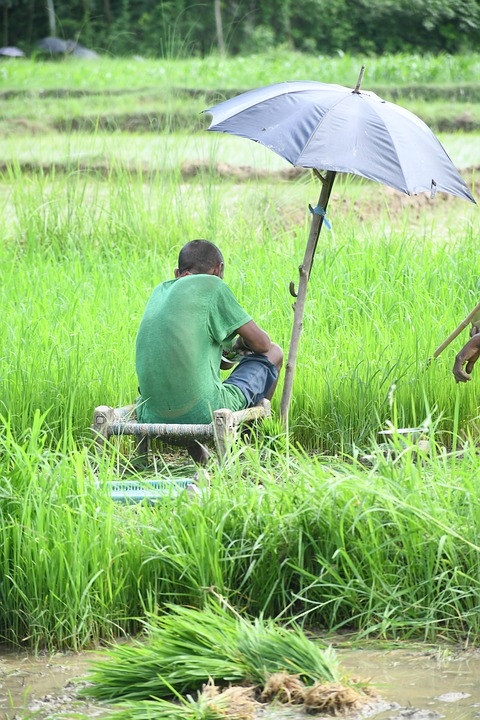# Sow Green, Grow Green: Sustainable Gardening Tips for Every Home
There’s something magical about stepping outside, breathing in the fresh air, and sinking your hands into the rich, dark soil. A few years ago, I decided to transform a small patch of my backyard into a vibrant garden. It began with a single tomato plant, but soon blossomed into a sanctuary filled with herbs, vegetables, and flowers that danced in the breeze. Fast forward a few seasons, and I’ve become not only a gardener but an advocate for sustainable practices that benefit our planet. Whether you’re planting in a sprawling yard or a compact balcony, here are valuable tips on how to sow green and grow green while cultivating a garden that delights the senses and nurtures the earth.
## Understanding Sustainable Gardening
Sustainable gardening isn’t just a trendy term; it’s a way of life. At its core, it emphasizes the balance between growing plants and caring for our environment. By embracing this philosophy, you’ll improve soil health, conserve water, and promote biodiversity, all while creating a green space that enhances your home.
### Getting Started: Soil Health is Key
The foundation of any successful garden begins with healthy soil. Here’s how to kickstart your soil rejuvenation:
1. **Test Your Soil**: Use a simple soil testing kit to check the pH and nutrient levels. This will guide your amendments.
2. **Build Up Your Soil**: Incorporate organic matter, such as compost, leaf mold, or well-rotted manure. These ingredients enrich the soil with nutrients and improve drainage.
3. **Practice Crop Rotation**: If you’re planting annuals, varying their positions each year helps prevent nutrient depletion and reduces the risk of pests.
### Choose Native and Adapted Plants
Opting for plants native to your region is one of the simplest ways to ensure your garden thrives with minimal intervention. Native plants evolve alongside local ecosystems, making them resilient to pests and diseases.
Plus, incorporating these plants nurtures local pollinators, like bees and butterflies. Consider adding these flowering beauties to your garden:
– **Coneflowers (Echinacea)**
– **Butterfly Bush (Buddleia)**
– **Black-eyed Susans (Rudbeckia)**
### Vertical Gardening: Space-Saving Solutions
Even if you’re working with limited space, vertical gardening is an ingenious method to maximize your area. Here are some ideas:
– **Trellises**: Train climbing plants like peas and cucumbers up vertical structures.
– **Hanging Gardens**: Use pots suspended from walls or ceilings to grow herbs and small plants.
– **Wall Planters**: A fun and chic way to display your plants.
### Water Wisely
Water conservation is a cornerstone of sustainable gardening. Here’s how to water wisely:
1. **Mulching**: Apply a thick layer of organic mulch around plants to retain moisture and suppress weeds.
2. **Rainwater Harvesting**: Set up a rain barrel to collect rainwater for your plants. This not only conserves water but also provides plants with natural, untreated water.
3. **Drip Irrigation**: Consider installing a drip irrigation system that directs water at the plant’s root zone, minimizing waste.
### Composting: Turn Waste into Gold
Utilizing kitchen scraps and yard waste in a compost bin turns garbage into valuable compost that enriches soil life. Here’s how to get started:
– **Select a Spot**: Choose a dry, shaded area near your garden for composting.
– **Layering**: Start with a mix of “green” materials (nitrogen-rich like vegetable scraps) and “brown” ingredients (carbon-rich like dry leaves and cardboard).
– **Turn It**: Every few weeks, aerate your compost by turning it with a pitchfork. This enhances decomposition.
### Pro Tips for a Flourishing Garden
1. **Plant Companion Crops**: Utilize the power of companion planting! For example, growing basil alongside tomatoes can improve flavor and repel pests.
2. **Incorporate Perennials**: Consider adding perennial vegetables like asparagus, artichokes, and rhubarb. They provide harvests year after year.
3. **Educate Yourself**: Zealously pursue knowledge. Attend local workshops or pick up a few books on sustainable practices. Find community resources to support your journey.
4. **Start Small**: Don’t overwhelm yourself; begin with a few easy-to-grow plants. Success breeds confidence!
5. **Engage with Nature**: Spend time observing and understanding the local wildlife in your garden. Creating a habitat will draw beneficial creatures!
### Pest Management the Eco-Friendly Way
Pests are an inevitable part of gardening, but you don’t have to resort to harmful chemicals. Here are natural pest management strategies:
1. **Encourage Beneficial Insects**: Attract ladybugs, lacewings, and predatory wasps by planting flowers like dill and yarrow.
2. **Essential Oils**: Mix a few drops of peppermint or neem oil with water to spray on infested plants. These natural oils deter many common pests.
3. **Handpicking**: For larger pests like caterpillars or slugs, simply remove them by hand. You’ll become more familiar with your plants in the process!
### Seasonal Gardening Tips: What to Plant When
#### Spring
– **Planting Time**: Start your seeds indoors for tomatoes, peppers, and eggplants.
– **Direct Sow**: Root vegetables like carrots and radishes thrive when planted directly in the garden.
#### Summer
– **Herb Harvesting**: Regularly trim herbs to prevent flowering and promote new growth.
– **Pest Patrol**: Keep an eye out for emerging pests, especially aphids and spider mites.
#### Fall
– **Sowing for Winter**: Consider sowing cover crops like clover or rye that build soil health during the dormant months.
– **Plan for Spring**: Take notes on what worked and what didn’t, adjusting your plans for the upcoming year.
#### Winter
– **Protect Your Soil**: Use mulch to cover any exposed soil, protecting it from erosion and nutrient loss.
– **Planning**: Now is the perfect time to sketch out your garden layout for next season. Research new varieties you’d love to try.
### Embracing Community
Gardening can be a solitary activity, but it doesn’t have to be! Engage with your local community by:
– **Participating in Garden Swaps**: Exchange seedlings or produce with neighbors.
– **Joining Community Gardens**: Share resources and skills with fellow gardeners.
– **Volunteering**: Get involved in local cooperative gardens or urban farming initiatives.
### Concluding Thoughts
Gardening sustainably is about more than just growing your own food; it’s an opportunity to reconnect with nature and cultivate a lifestyle that honors our earth. By embracing practices like composting, planting native species, conserving water, and building community, you can create a thriving garden that’s not only green but also a joy to tend. Every seed sown is a commitment to a healthier planet, and with these tips, you’re well on your way to creating a lush, vibrant oasis right at home.
So grab your gloves and get sowing—let’s grow green!



